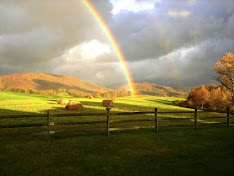 |
| "Responsible" detectorists in a landscape |
I totally disagree. Quite apart from the fact that it is now very clear the programme's "presentation" does no such thing, there are unanswered questions about its own ethical issues, and the guidelines are space-filling crap, this simply has not been thought-through.
1) To make artefact hunting and collecting into "archaeology for all" or "citizen archaeology" and not merely looting, there has to be full mitigation of the damage done by taking random collectables out of the archaeological record. And let us say, for the sake of discussion that all this mitigation requires is (as mainstream British archaeology asserts) an x-marks the spot record in the PAS.*
2) Obviously, this means not promoting artefact hunting to a degree or in a way that produces a lot of new detector users beyond the number that the Portable Antiquities Scheme with the resources and staff it currently has cannot cope. That seems pretty obvious. No?
3) Anything beyond this means that archaeological contexts are trashed by collectors, findspots and artefacts go unrecorded or under-recorded, information is lost. This is information that is lost through current policies and approaches to a damaging, erosive and exploitative minority hobby.
4) So what's the magic number? What is the maximum number of artefact hunters that we can expect could be recruited to do "citizen/archaeology for all" in the current situation?
5) Before the pandemic, PAS was recording around 80000 artefacts a year (artefacts, not records). Annual reports say that just over 90% of them (artefacts not records) were generated by "metal detectorists" (artefact hunters and collectors). That's 72000 artefacts (not records) a year, pre-pandemic. Several official statements (for example, here) suggest that more are offered for recording, but the PAS has not the capacity to deal with more and have to be selective. Those 72000 artefacts are the current upper limit.
6) Netnographic research that Heritage Action did in the early 2000s, together with contemporary sources (including surveys done by detectorists and artefact-hunter-supportive archaeologists) indicated that the statistical-average detectorist was generating just over 30 recordable finds a year (recordable does not mean the finder recognised any obligation to get them recorded). That's the figure that the Heritage Action Artefact Erosion Counter uses. [It is possible that improvements in detectors in the past decade and a half mean that number should be increased].
7) If therefore the PAS has its resources stretched mitigating detection by recording 72000 artefacts (not records), it means that the current carrying capacity of the PAS is 72000/30 = 2400 artefact hunters. Anything above that means that information is lost, inadequate mitigation is taking place.
8) How many artefact hunters were in Britain pre-Covid19-Pandemic? I have elsewhere presented evidence that the figure of 27000 seems a perfectly reasonable one. I am currently inclined to believe that by now an estimate of 30000 is not out of the question.
9) The difference between 27000 and the PAS carrying capacity of 2400 is pretty stark.
10) So, in my view, in the real word, as it exists in today's Britain and not some airy-fairy 'sunlit uplands' of Unicornland, archaeologists promoting artefact hunting as a hobby that everyone can take up to do "archaeology for all" on top of the numbers that do so is extremely myopic and irresponsible.
I am prepared to discuss that with any archaeologist who disagrees with me on factual grounds rather than unicorn-lore.
*This is nonsense of course, the archaeological context of every object hoiked out of a site or assemblage is much more than "where on a map".
No comments:
Post a Comment